What does it take for consumers to learn about your brand? Increasingly, all they need to do is look down at their phones.
Consumers are inundated with product information on social media mobile apps and websites. It comes in many different forms — organic posts, sponsored content from influencers, digital ads, and product listings — on a variety of channels, from Instagram to YouTube to Pinterest.
Branded content is so ubiquitous on social media that around a third of U.S. consumers now head to sites like Facebook and Youtube to begin their product searches. Over half have purchased something they first heard about on social media.
It goes without saying, then, that in today’s online economy, a strong social media strategy is essential to running a profitable ecommerce business.
Every seller has their own approach to social media. Some may find that just posting organic content works best for their brand, while others choose to only use it to run ads. You may decide to use a full suite of platforms, or perhaps you’ll settle into just one app. Whatever your method, you’ll find that your effectiveness comes down to a simple guiding principle: maintain a consistent, engaging presence.
Let’s go over what it takes to build a winning social strategy, with tried-and-tested tips from Jungle Scout’s expert ecommerce sellers.
15 tips for an effective social media marketing strategy
1. Define your audience
Social media allows you to both broaden your audience and narrow it at the same time: while you can make your public, organic content available to anyone and everyone on social apps, you can also target your content toward relevant segments of the millions of people who use social platforms every day.
Knowing detailed information about the kind of customer you’re trying to attract via social media will help determine what, where, and when you post content. So before you do anything else, you need to identify the target audience for your brand or product.
Who is the intended user of your product? What are the characteristics and behaviors of your existing customers? What are their favorite social platforms? Once you’ve pinned down these details, you can take steps to ensure your social media content is reaching the right eyes.
2. Don’t use every existing platform
Using more platforms is not necessarily better; spreading your efforts over too many channels can end up being a waste of time. While research shows similar rates of overall social media use in the U.S. across gender, income, and education levels, there’s a ton of variation in terms of which age groups use which platforms.
For example, if your target audience is primarily teens, setting up a perfectly-optimized LinkedIn profile for your brand shouldn’t be a priority — you should instead head to the platforms teens actually use, like TikTok. On the other hand, if you’re selling products targeted to parents, you should instead look to Facebook.
Take a look at which platforms your target audience uses, and make two lists: one with the platforms they use most, and one with the platforms they don’t use as much. Focus on building your social media presence through the former.
New social media platforms emerge all the time, but here are the most popular ones you should consider right now:
- YouTube
- TikTok
I’ll also note here that Amazon has its own mini social media platform built into its marketplace: Amazon Posts. Sellers can post recycled Instagram content and earn “followers” who can receive updates from their brand on Amazon.
The platforms you choose will also come down to the kind of content you want to create. If you produce a lot of videos, you’ll want to share them on YouTube, Instagram, and/or TikTok. Instagram, Twitter, and TikTok are great places to garner influencer- and user-generated content. If you want to build a community around your brand or niche, try Facebook and Pinterest, where you can easily post instructional content and lifestyle images to large groups of friends and followers. Finally, LinkedIn can benefit brands who want to target career professionals or other businesses. It can also help establish a credibility in your niche.
3. Claim your handles and usernames before they’re gone
Your brand name is unique, but its availability as a social media username — also known as a handle — isn’t guaranteed. By sheer coincidence or calculated strategy, the handle that most closely matches your brand name (like @nike, @starbucks, or @junglescout) could already be in use in any number of platforms.
A good rule of thumb is to claim your usernames across multiple social media platforms as soon as possible, even if you’re not sure you’ll use them much. Until you decide to either devote more time to a particular platform or delete your account, just make sure you post something every so often, or your account could be disabled due to “username squatting.”
Keep the handles as similar as possible — both to each other and your brand name — across different platforms, so customers can easily find your official accounts. If you can’t claim your exact brand name, try some of these relevant variations.
Once you attract enough of a following on each platform, you can apply for verification badges on Twitter, Facebook, YouTube, TikTok, Instagram, and Pinterest. The “blue check mark” instantly lends more legitimacy to your brand’s official profile.
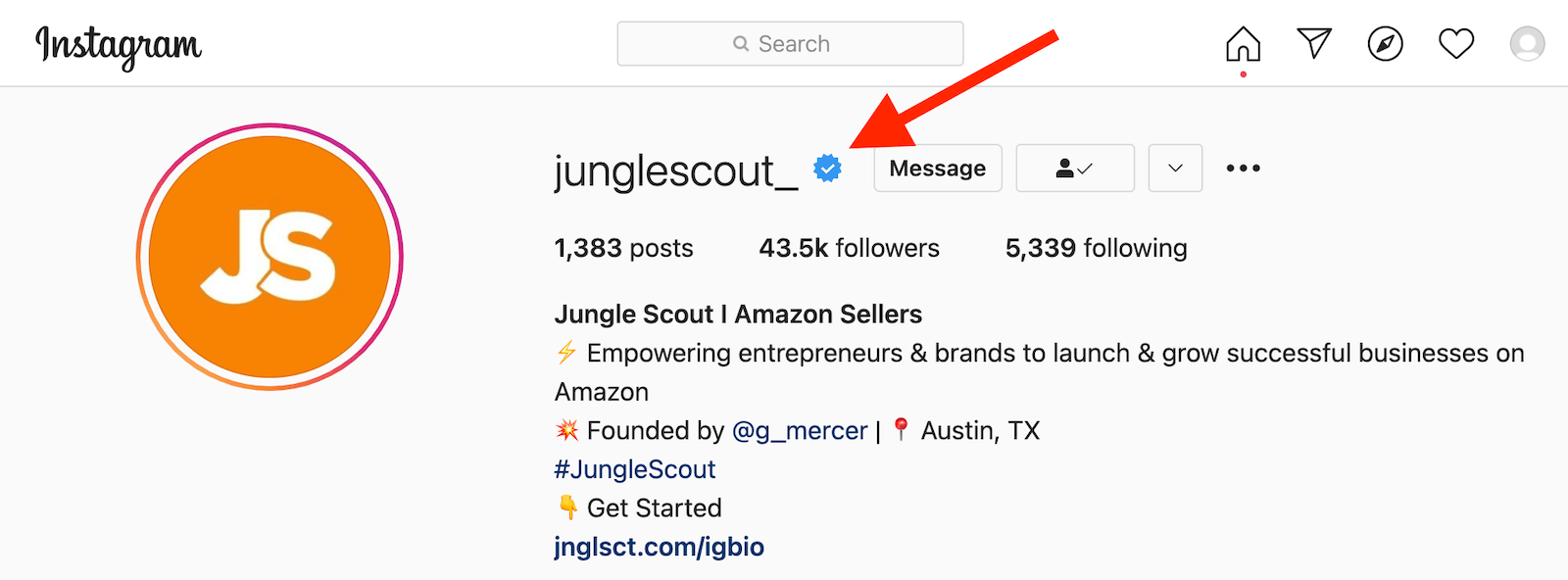
4. Find your voice and set your tone
On social media, you can let your brand personality shine. Photo captions, video scripts, live streams, and your bio content each represent great opportunities to make your mission resonate with existing and potential followers.
Use voice and tone to create a specific mood for your brand. What kind of emotions do you want to elicit from your audience? If your brand was a person, what character traits would they possess? What adjectives do you want your audience to associate with your brand? Let your answers to these questions guide how your brand speaks on social platforms.
If you’re not sure where to start, try using the “big five” brand personality traits as a jumping off point:
- Excitement
- Sincerity
- Ruggedness
- Competence
- Sophistication
You can mix and match your emphasis on each of these traits to form a unique identity for your brand.
You may want to change your tone as you create content for different platforms, especially when switching from speaking to a more casual or playful audience (like Instagram or TikTok) to one that’s more intellectual or professional (like Twitter or LinkedIn).
Customers hold high expectations in terms of how brands should conduct themselves on social media. Content trends and popularity can shift wildly in the blink of an eye, and it’s incredibly easy to alienate your audience by recycling overplayed lingo or memes. But get it right, and your brand could reach viral notoriety — and the boost in sales that comes with that.
Study the vocabulary your audience uses — how do they talk about products like yours? Speak the language of your target consumer.
5. Use software tools to keep a calendar and daily schedule
It’s important to post consistently to keep your social media content discoverable — at least once a day to keep the content suggestion algorithms on most platforms happy.
The specific time of day at which you post matters, too, and varies for each specific channel. Try posting during peak hours, adjusting your timing until you find the window that earns your content the most engagement.
Manually publishing posts each day can get annoying. Thankfully, there are a ton of scheduling apps available to keep you on track. Tools like Creator Studio, Sprout Social, Later, and Planoly let you schedule social posts across different platforms, visually plan your feeds, and discover optimal times to post through engagement data analytics.
You should also stay on top of trending news in your niche, so you can post timely updates or reactions to events and stories your audience is following. You can set Google alerts for keywords related to your brand or industry, follow relevant hashtags and accounts on Instagram and Twitter, and use “social listening” tools like Agorapulse. Over time, followers may start setting alerts for your account to catch your fresh takes.
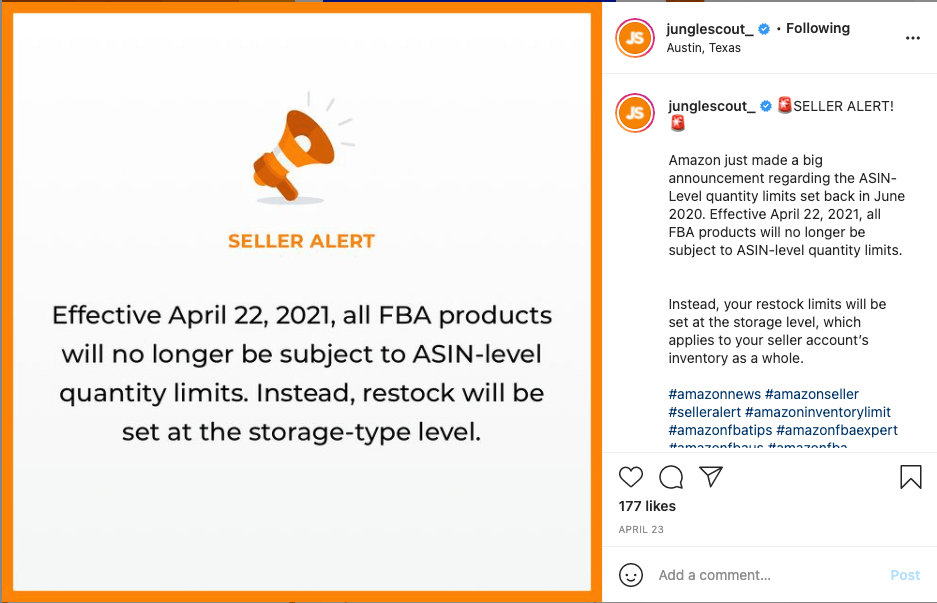
Keeping a long-term calendar is also useful for staying on top of seasonal sales events. Use social media to notify your audience about special deals or promotions, and entice them to shop your brand during seasonal shopping dates like Prime Day, Labor Day, Cyber Monday, or Mother’s Day.
6. Build your following
If you’re brand new to social media, it can be difficult to build a following. But earning more followers helps spread your content to a wider audience, so you have to put work into building your count.
You may have heard about buying followers as a quick, cheap way to boost your account’s popularity — for a few dollars, you can reel in thousands of new followers overnight. This strategy can backfire: more often than not, the accounts you’re paying for aren’t operated by real people — they’re bots whose very existence violates most apps’ terms of service. Platforms like Instagram actively seek out signs of mass bot followership and shut down offending accounts, sending you back to square one.
Don’t fall for paid follower schemes. Earn real followers by using these techniques instead:
- Post high-quality content on a consistent basis
- Run giveaway campaigns or contests
- Generate engagement through polls and questions
- Make your content discoverable by using strategic hashtags, geotags, and account tagging features
- Interact with users through livestreams
- Join groups to network with people and brands aligned with your target audience
- Collaborate with influencers, followers, or other brands
Choose the accounts you follow wisely
You can also broaden your reach by exposing your content to other accounts’ networks. When you follow another account on Twitter, Facebook, or Instagram, they’ll receive a notification — at the very least, they’ll notice your handle — they may even follow you back.
You can also follow influencers, competitors, and brands you look up to, to keep an eye on the industry and get inspiration for your content.
Also, remember that your business social media accounts are an extension of your brand’s public identity. When you’re running a business, a follow isn’t just a follow — it’s easily interpreted as your brand’s stamp of approval for the other account. Be selective about the people and other brands you follow, and remember to keep your personal and business account activity separate.
7. Post high-quality, varied content
The name of the game for social media is engagement. Put simply, the more likes, saves, shares, and comments a given social media post receives, the more likely it is that a given app’s algorithm will suggest it to other users. And while individual posts can get engagement for all kinds of reasons, one of the biggest determinants is you content’s quality.
Users want to see attractive, well-lit images, read authentic and insightful or funny captions, and watch dynamic, exciting videos. They also want to be entertained with new ideas and stories.
There’s nothing necessarily wrong with posting the same kind of content all the time — some of the most popular accounts on Instagram and Twitter prove that if the format is entertaining enough, it never gets old.
But that’s not always true for brands. While displaying your products in action is important, making your social media feed hyper-focused on your products can feel too promotional and turn people off — social media users want to see organic content, not 24/7 ads.
To keep your followers engaged, try posting a variety of different content, including:
- User-generated lifestyle images (more on this below)
- “Inspirational” or “aesthetic” images relevant to your brand
- Screenshots or quotes from exceptional customer reviews
- News about your brand or industry
- Memes and reaction gifs
- Infographics
- Information about sales and promotional events
- Engagement prompts and questions
Content pillars constitute an effective framework for generating social content ideas. These refer to the three to five main topics or themes that you’ll set as the foundation for all of your content. Pillars should be specific to both your audience and brand, but broad enough to help you create multiple types of content for each.
As Jenna MacLellan, Jungle Scout’s Social Media Associate, explains, “when planning my content, I have a few pillars I know work (like engagement questions) that I make sure to sprinkle in throughout the week.”
Content pillars can include concepts as well as actions. Here are some examples:
- Entrepreneurship: words of wisdom from founders or inventors
- Humor: memes and reaction gifs
- Educate: infographics, webinars, and blog posts
- Engage: polls and question prompts
Jenna notes that it’s less important than it used to be to have a cohesive feed. At the end of the day, “you’re better off just posting things you know your audience will find value in or will provoke emotion (laughter, inspiration etc.).” But some visual flow helps with grid-view platforms like Instagram — you can easily achieve that with a recurring color scheme and consistent font choices.
Here’s a look at some of Jenna’s recent posts for the Jungle Scout’s Instagram account. Over just a few days, she’s used a few different content pillars to create a thematically varied but visually cohesive content grid: there’s an announcement about an upcoming event, our weekly activity roundup, a tutorial video, an inspiring CEO quote, an engagement prompt (“caption this!”) and an infographic from one of our data reports.
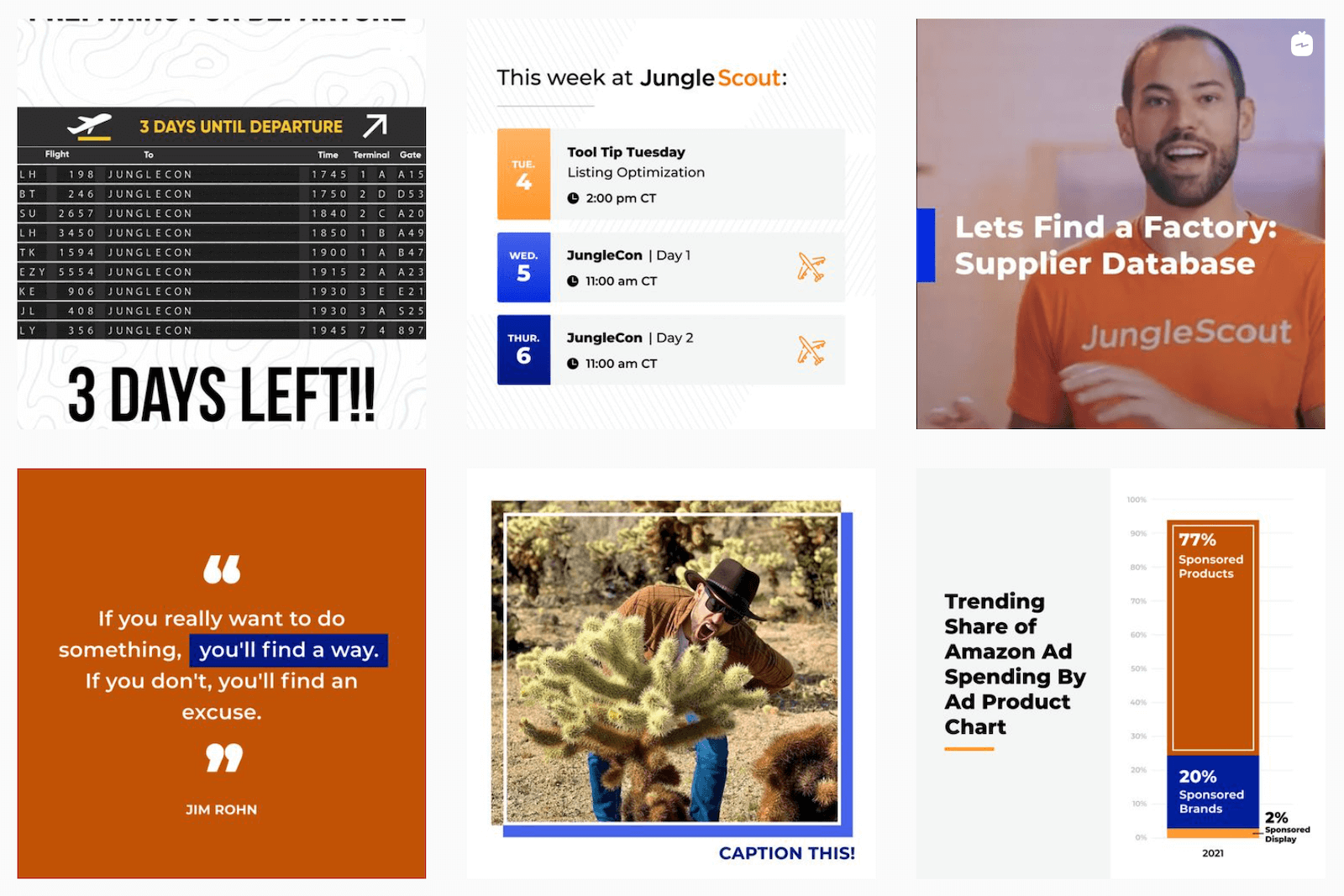
Here’s a look at some of our top-performing Instagram content, ranked by engagement (top) and likes (beneath).


Jenna knows our audience enjoys engagement prompts, memes, and Amazon-related updates, so she makes those a focus area.
Use plenty of video content
Video content should be central to your social media strategy. Users across all platforms love watching and sharing product-related videos, which let you showcase your product and its functionality from multiple angles and settings.
Another great thing about social media video content is that it doesn’t have to be as polished as a TV commercial. You can easily shoot videos on a smartphone and upload them to Instagram as Reels, IGTVs, or Stories, or post them to TikTok.
You’ll want to put more editing effort into anything you publish on YouTube, where viewers expect higher-quality video content. But you can always repurpose snippets of your YouTube videos for other platforms.
8. Celebrate milestones and accomplishments
Celebratory posts are a no-brainer for generating engagement. Your audience wants to see you win — granted that you communicate accomplishments with genuine appreciation for your followers.
Here are some achievements and events you’ll want to celebrate with your followers:
- Audience growth milestones (i.e. reaching 10K Twitter followers, 1 million YouTube views, etc.)
- Your brand’s birthday or anniversary
- Staff birthdays
- Awards your brand has earned
- Goals or achievements your customers accomplished while using your product
Here’s how to make those celebratory posts feel sincere, not braggy:
- Thank your followers when you reach engagement milestones
- Feature UGC in your celebratory post
- Run a promotion, giveaway campaign, or a contest
- Make a charitable donation to a worthy cause
9. Seek engagement and encourage UGC
User-generated content, or UGC, is invaluable to brands. By inspiring your followers and customers to post their own organic content about your brand, you build social proof and reap the benefits of free advertising.
Instagram is perhaps the best platform for soliciting UGC — its algorithm was essentially built for the stuff. Hashtags, reposts, and Reels Remixes make it simpler than ever for followers to amplify your account and connect you to a wider audience. TikTok is another great place for UGC, where customers’ video reviews can easily and quickly go viral.
Take a look at the Instagram feed for popular Amazon-based sportswear brand Baleaf. It’s almost entirely made up of lifestyle-image UGC submitted by happy customers from around the world.
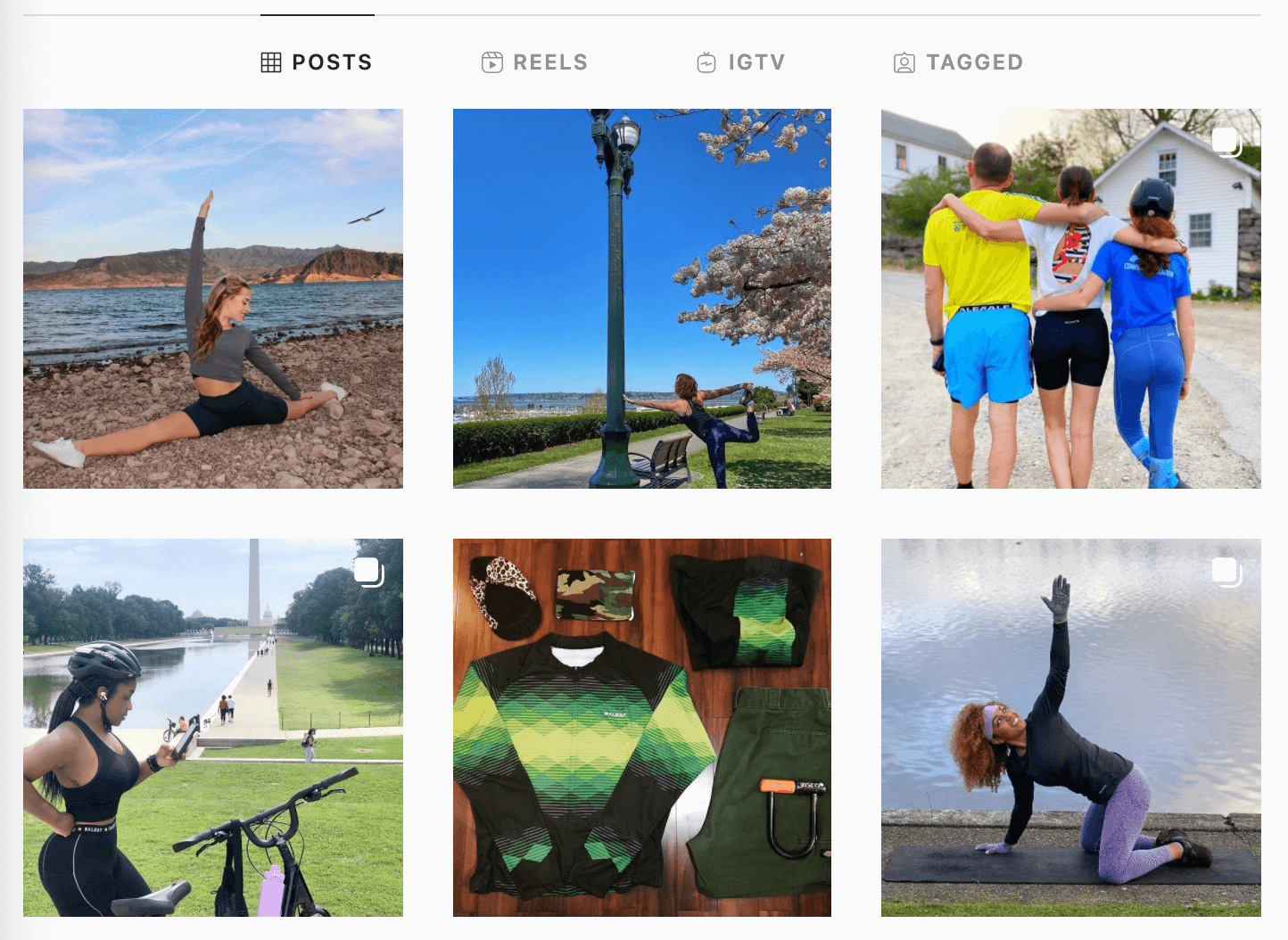
To inspire UGC, all you need are two things: interesting, replicable content and a call to action. The content can be anything — a product or lifestyle image, an engagement prompt, or a video tutorial are good places to start. Calls to action are exactly what they sound like: invitations to take a specific action, like using a brand-related hashtag in their next caption, commenting on your posts, or posting the results of a tutorial you created.
Here are some examples to get you started:
- An “outfit of the day” image featuring your product, plus #[your brand]ootd in the caption
- A recipe video involving your product with a caption challenging viewers to try it out
- An Instagram Story that asks followers to respond with how they use your product
For more inspiration, take a look at some other social media accounts that do an excellent job incorporating UGC into their Instagram feeds — Everlane, Glossier, and YETI are great places to start.
10. Collaborate with niche influencers
All this is not to say you shouldn’t pay people to promote your brand on social media. Influencers and affiliates can be invaluable assets, as their massive followings and knack for creating share-worthy sponsored content, or “sponcon,” can boost your reach beyond what you could accomplish alone.
Gymshark, for example, has a robust Instagram influencer program. Content created by Gymshark’s roster of influencer-athletes has helped the brand earn 5.3 million followers and a $1.3 billion valuation in 2020.
As Jungle Scout’s resident Amazon expert, Brian Connolly, explains, you should think small and specific when sourcing influencers for your brand. “Don’t go for someone with just a large, general following. You have a better chance of getting engagement and sales from a more niche account.” For example, “if you sell soccer equipment, find someone in the soccer space with a following.”
Ed Carlin, another of Jungle Scout’s expert ecommerce sellers and the host of our weekly Tool Tip Tuesday webinar, echoes this idea: “accounts with millions of followers may be less effective than up-and-comers.” He explains that a micro-influencer’s audience may be more receptive to sponcon, because there’s generally less of it on their feed.
On top of that, “pricing is all over the place,” says Ed of the influencer industry. Smaller, niche influencer accounts may fit your budget better than more famous ones.
Getting in touch with potential influencers is as easy as sending them a direct message on Instagram. Try searching hashtags related to your product or brand to find niche influencers. You can also use tools like Buzzsumo or TrendSpottr to identify good candidates.
11. Make it easy to shop your brand on social media
The underlying goal behind establishing a social media presence is to build your brand’s audience. But don’t lose sight of your other important objective: converting followers into customers.
Consumers are increasingly tech-savvy and mobile when it comes to shopping online, with 69% making purchases through their phones. You’ve got to make it as easy as possible for your social media followers to purchase your products. Here’s how:
- Create points-of-sale on Instagram and Facebook for in-app shopping
- Link to your product listing, ecommerce storefront, or official landing page in your social media bios
- Make sure your social media handles closely match your brand name or website domain for easy Googling
You can use tools like Linktree or Shorby to link to multiple URLs from within your social media account bio sections.
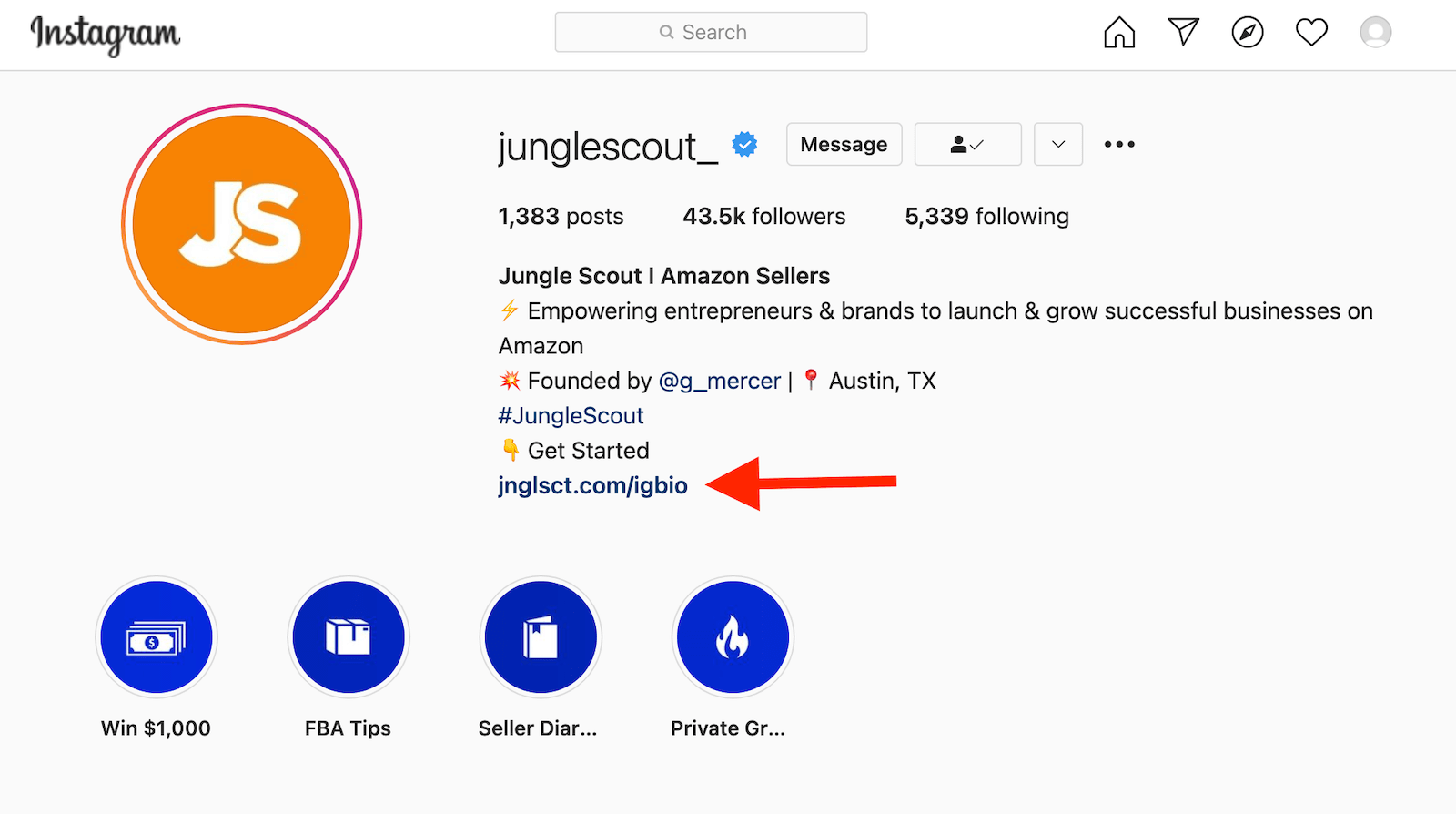
12. Promote low-selling products
Ever have a product that just won’t sell well on Amazon? For whatever reason — its few or poor reviews, price point, or lack of a certain je ne sais quoi — your product just hasn’t enticed customers, and you’re ready to give up on it.
Before you do that, try rehabilitating the product on social media. You don’t have to spend any more advertising dollars on the low-seller — just post some organic content to highlight its best features or most useful functions, amplify its positive reviews, and offer coupons and discounts to followers.
Don’t underestimate Instagram’s ability to flip a once-hated product into a new favorite — if people can use it to make 2000s-era clothing cool again, you can use it to save your low-performing product.
13. Run advertising campaigns to broaden your reach
On social platforms, organic content goes a long way — but so does good, old-fashioned advertising. Leveraging social media’s incredible targeting capabilities is a great way to get noticed by users who might otherwise never find your account. You can run ads on pretty much any popular social media platform, but the most popular platforms for marketers include Facebook, Instagram, and YouTube.
On that note, let me take a moment to geek out a little about Facebook’s ad technology.
You’re probably used to seeing digital advertisements all over the internet. As many people have noted, it’s hard to overlook how weirdly relevant they can be.
If you’ve taken out ads for your brand on Amazon or Google, you know that they find audiences based on data they’ve collected about people’s online viewing and purchasing habits. Facebook takes the concept of audience targeting and turns it up several notches.
How do they do it? With help from every Facebook user, of course. Facebook functions as a search engine, ecommerce platform, and a social media channel. Through its many user bio fields, friend and family networks, groups, and “followable” pages, it collects personal data about users’ identities and interests as well as their browsing and shopping behaviors. All of that data lends itself to “ridiculously powerful” targeting strategies that uncover every possible relevant user. Want your posts to reach Millennial moms who work from home? Spanish-speaking churchgoers in Naples, Florida? Budget-savvy West Coast retirees? With a bit of toggling in the targeting settings, you can do that.
In addition, Facebook ads can be formatted to closely resemble organic posts. As Ed notes, this makes ads look “more authentic and credible” than other digital ads. Users can like, share, and comment on ads, just as they would with any other content that appears in their feed.
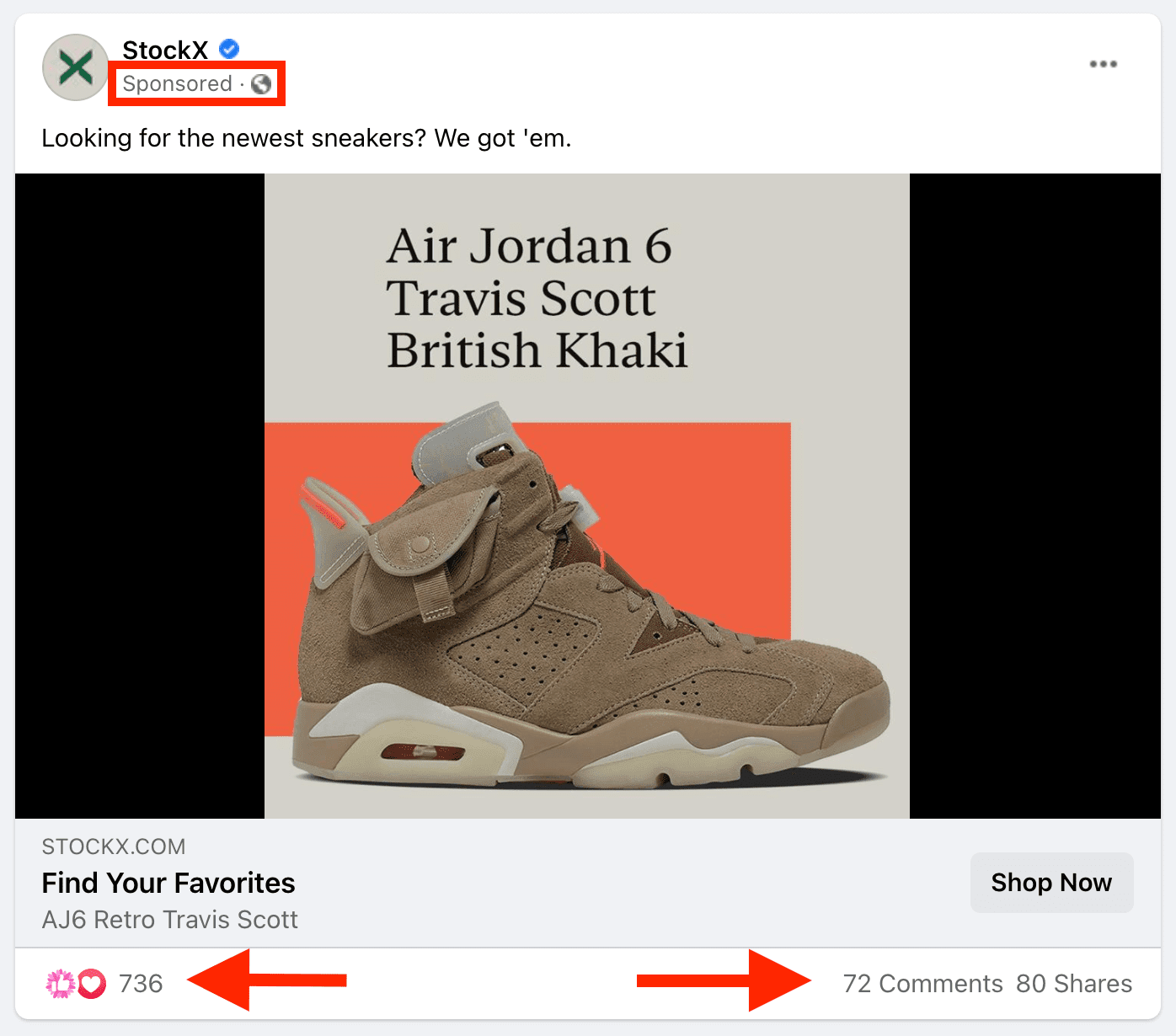
Ed recommends setting up a Facebook business account for your brand so you can earn followers, run ads, and sell products in Facebook Marketplace as the official brand owner. He notes that you can also add multiple users to a business account, so your staff, business partner, or virtual assistant can help you manage your Facebook operations.
14. Answer questions and respond kindly to feedback
Take advantage of your proximity to shoppers and use social channels as an outlet for customer support. Answer questions, thank users for positive feedback, and have a plan for handling sticky situations.
The internet can be an unkind place for brands, where dunking on official accounts yields its own kind of social currency. Spend five minutes browsing recently-posted Tweets about any airline and you’ll see what I mean.
As a business owner, you’re bound to run into the occasional bit of negative feedback on social media, whether it’s a mean tweet or a rude YouTube comment complaining about your products or service.
This is the only rule you need to remember when dealing with internet hate: kill them with kindness.
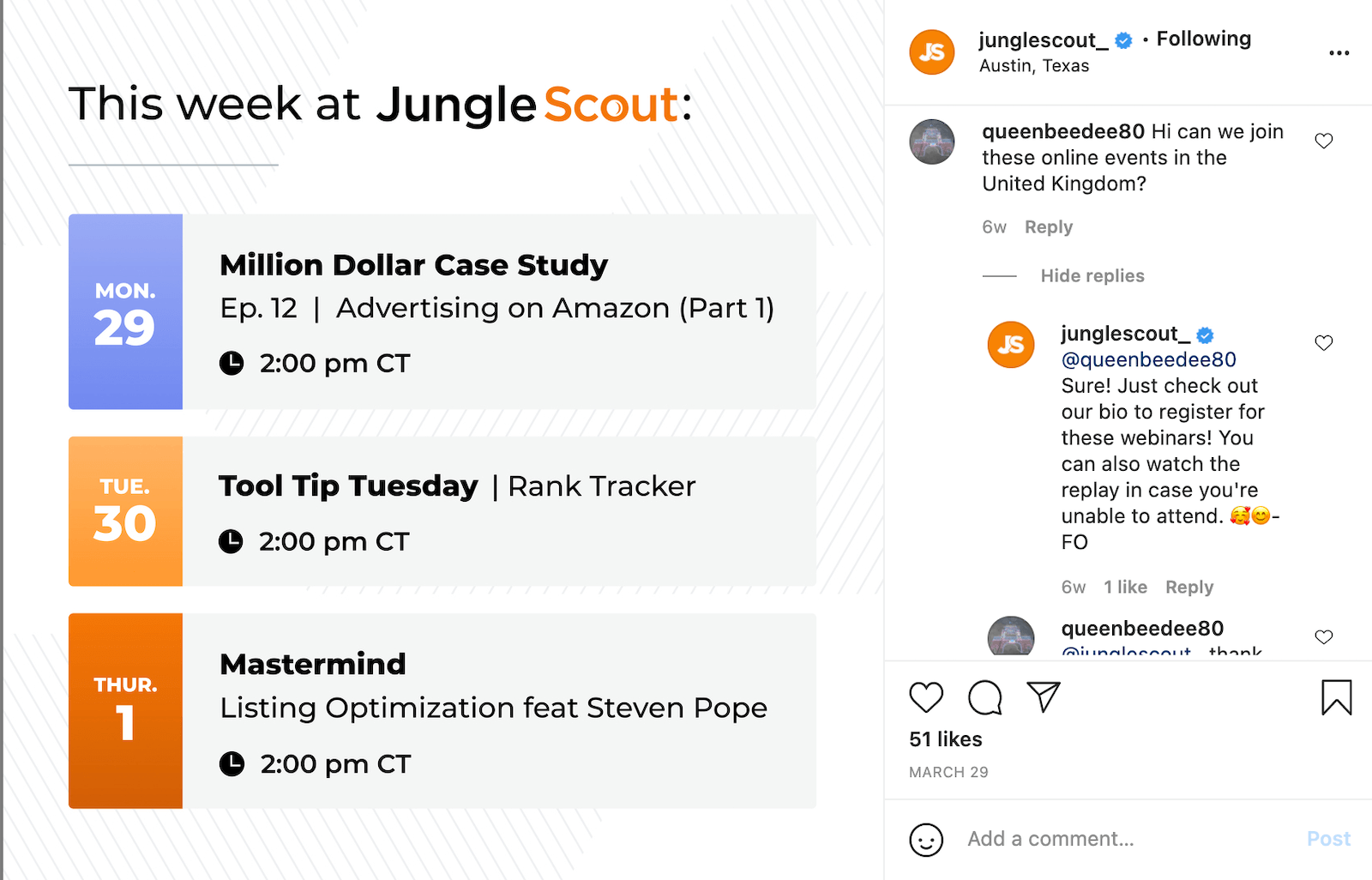
Respond to angry comments with empathy, and always lead with an apology and direct action remedy the issue. To avoid a high-visibility dispute in public comments, send the unhappy account a direct message. That way, you can soothe the angry customer, troubleshoot a problem, and prevent further issues from happening in the future. Here are some great examples of brands doing excellent customer service through social channels to give you ideas.
Users won’t always tag you in their complaints on social media. To stay on top of feedback, good and bad, listen for mentions of your brand by monitoring relevant keywords and hashtags. You can also keep an eye out for mentions of your competitors — see what social media users love and hate about brands similar to yours, and use those insights to improve your products.
15. Track your success
As with any marketing effort, you have to examine the data to know what works and what doesn’t. Figuring out which social media platforms generate engagement and conversions for your brand will save you time and money.
Use tools like Amazon Attribution, Later, Agorapulse, Sprout Social, and Hootsuite for powerful social media analytics. Here are the questions you’ll want to ask as you go through your performance metrics:
- What kinds of content earn the most engagement, reach, likes, and shares?
- What tone resonates the most with my followers?
- What time of day is best for posting content?
- Which platform helps me accrue the most followers and engagement?
Once you have the answers, make decisions to optimize your social strategy: keep the top-performing content and channels, and ditch the rest.
Start earning followers today
Using social media is a fun way to broaden your audience and earn loyal fans of your brand. Between tracking engagement, sourcing high-quality content, and keeping up with what followers want, there are a lot of moving parts involved in running an effective social media marketing strategy.
Remember that it all comes down to a few simple guidelines: strive for quality and authenticity, respond with kindness to any feedback, and don’t take yourself too seriously.
For some great examples of social media marketing best practices at play, check out Jungle Scout on Instagram, Twitter, TikTok, and YouTube!
Has your brand had success on social media? Share your top tips in the comments!
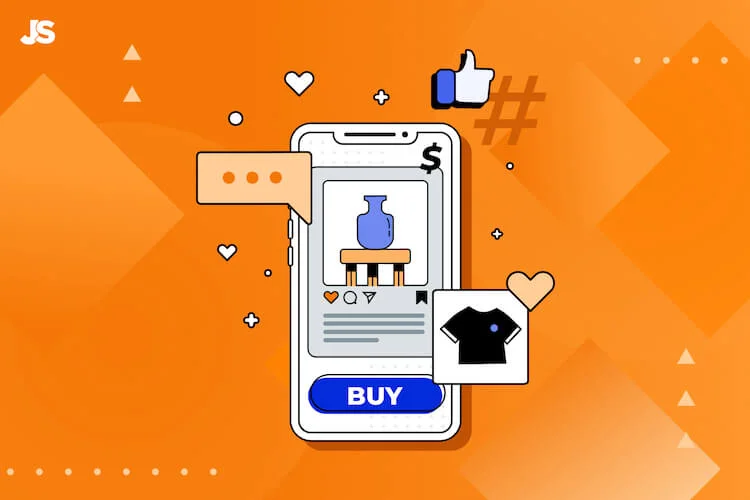
 26 Comments
26 Comments
26 comments on “2021 Social Media Marketing Best Practices”